Behind the scenes here at SISTRIX we work on hundreds and hundreds of small updates and improvements every year. We also bring our customers major improvements too. Across the product you will now find major new features such as an AI tool that is primed with exactly the right data, a new way to expose brand visibility for all domains, major enhancements to the keyword list processors and an extension of one of our most important features – selective live updates. There’s more too…
- AI Content Features
- Instant, personalised SERP updates
- Keyword list features
- Visibility Segmentation - filter the VI with topics and brands
- Extended search trends, cluster trends and list trends
- SERP similarity
- Compare SERPs
- Domain comparison report
- Amazon data updates
- Speed-ups, UI improvements and more
- New data journalist reports
- Notifications and social platforms
AI Content Features
Before the huge GPT hype started in 2022 we had already launched our first AI content tool. During 2023 we made major optimisations to help you prime the AI model with exactly the right data.
We’ve added a new plagiarism check and template system, which puts you on exactly the right path, with the right data.
Currently we have GPT3.5 Turbo and GPT4 available but we’ll be making changes, adding language models as we go along.
The important difference here is that this is a process that is primed and paired with SISTRIX data – from the right cluster of keywords, to the listing of successull content that can be used to generate style, intent and more content ideas.

Instant, personalised SERP updates
We update hundreds of millions of keywords every day and, since the end of 2022, you can see the data no more than ten minutes after we’ve collected it. A low-lag keyword database is critical to tracking migrations, Google updates, new content projects and web launches and we aim to remain the leader in fresh SERPs data.
We’ve enhanced our crawlers again this year by giving you control – we’ll update the SERP when you need the data. Single keywords, keyword lists and tracking projects can now be updated at the touch of a button.
Here’s an example. Over the next few weeks, the seasonal search term “turkey crown” is going to be an important one for UK supermarkets. But who is winning, now? Just a few minutes ago we updated the SERP. It took just ten seconds:
More importantly, who’s winning for the 412 other keywords for which the top ten URLs are ranking – the keyword environment? With a few clicks you can add the keywords to a list and, 65 seconds later in this case, you have the current rankings, and an evaluation showing the leading domains for that keyword environment. Who’s winning? Tesco.
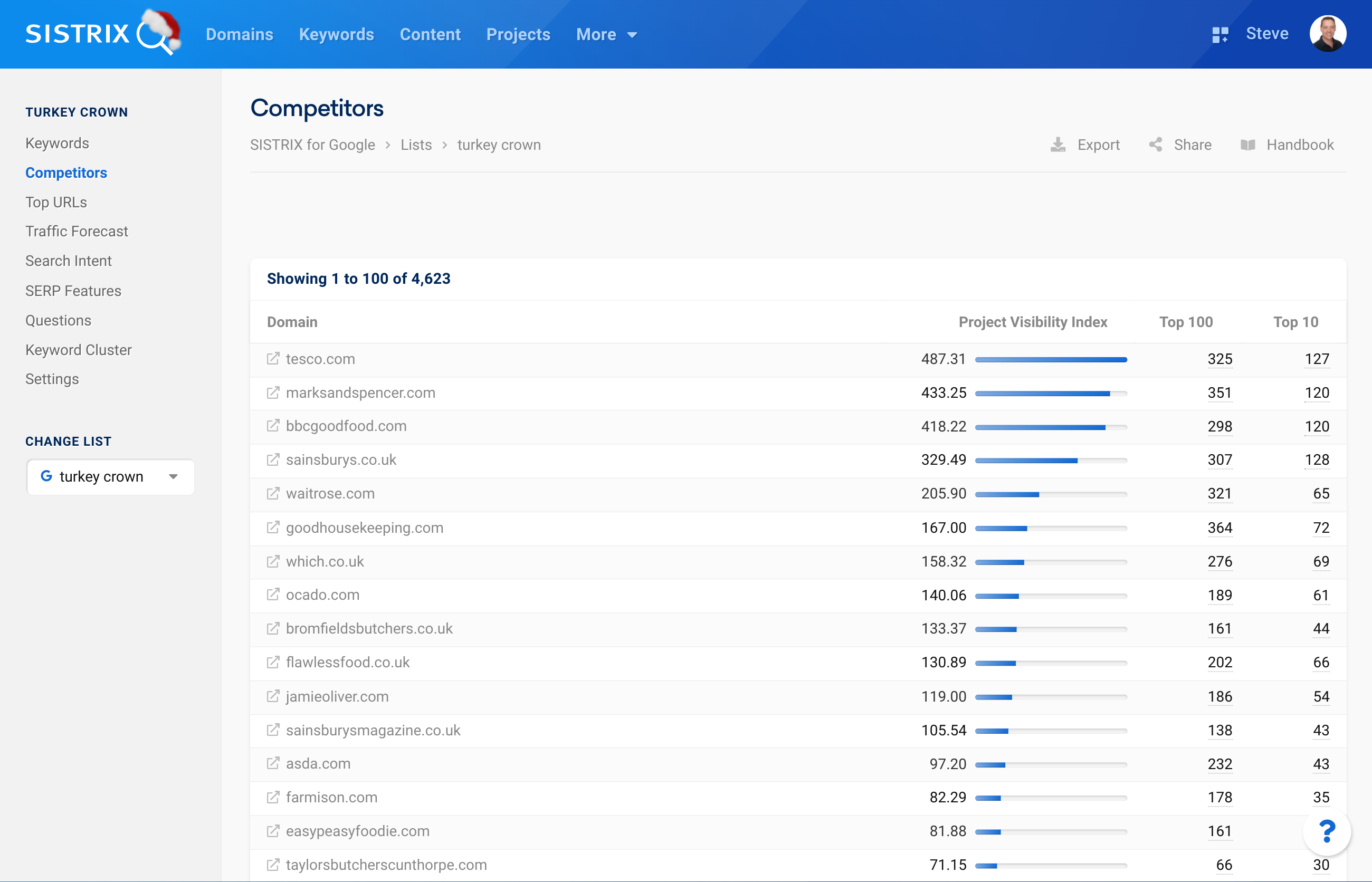
Keyword list features
Keyword lists aren’t just a place to save ideas, they are a place to process and refine keyword ideas.
You’ve seen the live update feature demonstrated above but in 2023 we introduced three other features. Top URLs, long term trends and an advanced clustering feature.
Let’s stick with the turkey crowns for a minute and look at the total seasonal traffic for those 413 keywords:
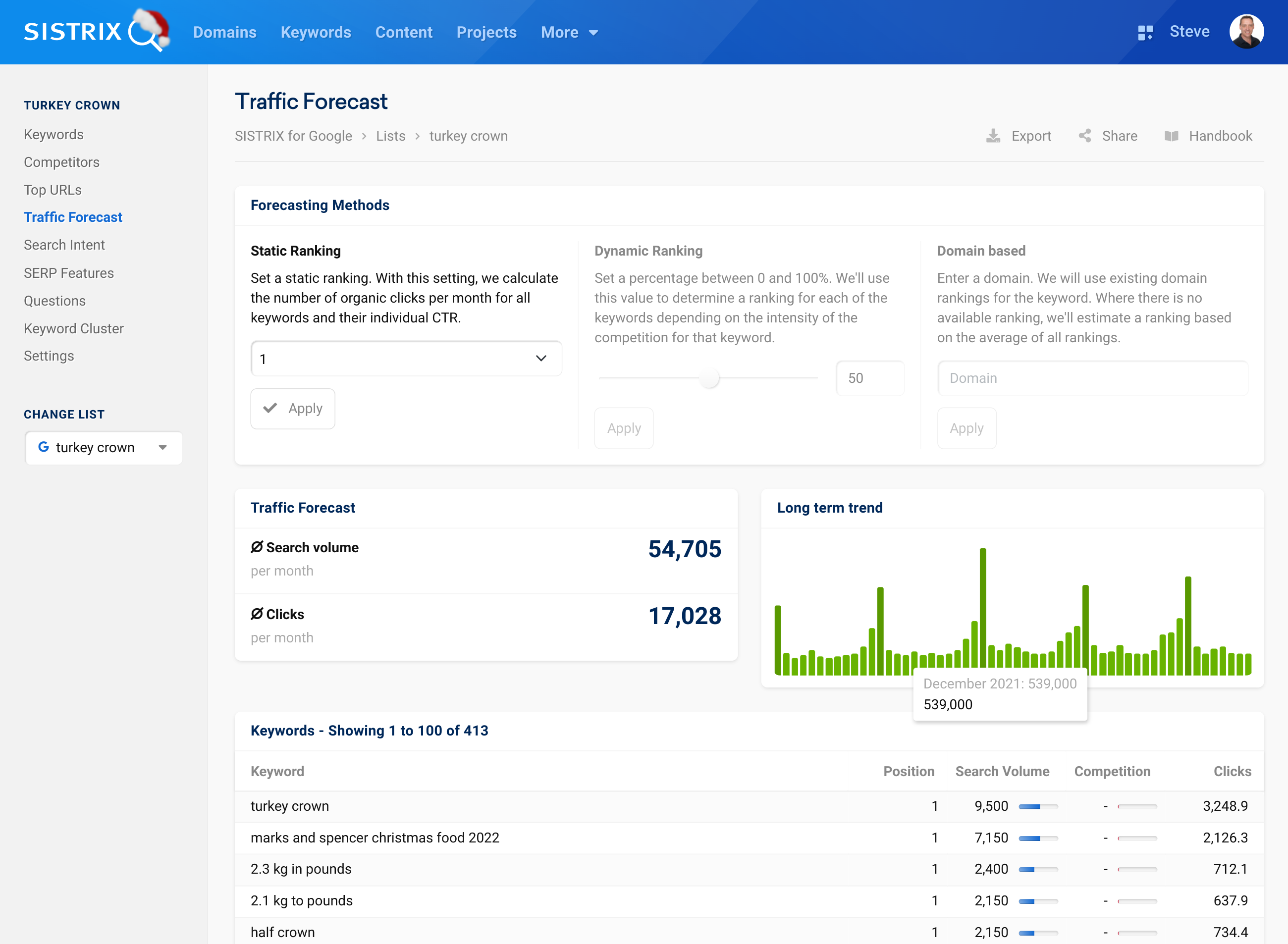
2020 was a peak year for turkey crowns. 2022 figures are up on last year and the 2023 figures will appear in the trend graphic soon.
If you’re planning your 2024 content and search marketing campaign you can start now because here are the top URLs for this keyword list:

And how does Google cluster these keywords? Remember, we’re talking about 10 URLs here, which can extend across a number of SERPs for users at the top and the bottom of the purchase funnel. The keyword cluster feature will reverse-engineer the groupings that Google themselves have used in their SERPs.
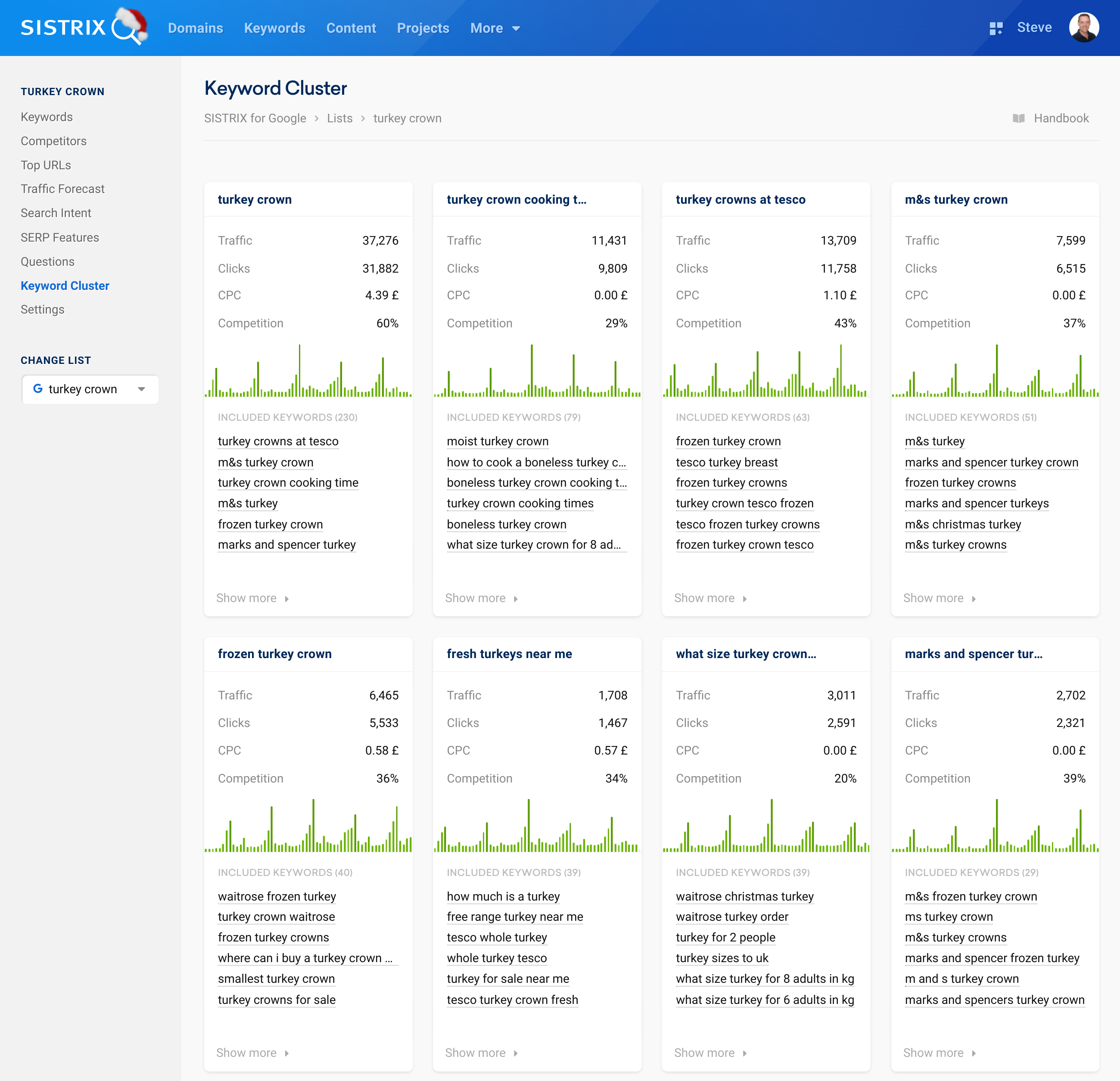
As you can see above, the new extended search history is shown with the clustering, which can help you identify rising and falling trends within a keyword list, even if it’s seasonal.
Visibility Segmentation – filter the VI with topics and brands
If your domain is highly visible and your domain is associated with a strong brand, how do you know whether your visibility is because of your brand, or because of your SEO work to attract brand-free searchers? Here’s a great example showing that 1.929 of the total 3.854 VI of pizzahut.co.uk, is brand-free traffic.
The new visibility index segmentation feature has just been launched and you can find more information here.
Extended search trends, cluster trends and list trends
Extended search trends are now shown for lists (as demonstrated above), clusters (as seen above) and for single keywords. Here’s a great example that we’ve reported on before. The Squishmallow was covered in our TrendWatch report in May 2022 but if we look at the data for DE, NL and UK, we can see different trends:
Search trends can also be seen as sparklines in the keyword lists, allowing you to identify rising and falling search trends by scanning across the sparklines.
SERP similarity
SERPs can differ dramatically but there are often chances to rank across SERPs with a single URL. The SERP Similarity feature will show you how URLs rank across up to three SERPs, and it will highlight any URLs that have been successful ranking across the different SERPs. The URLs can be used as blueprints for your own URLs.
Here’s an example where five URLs are ranking successfully in the top 10 across three SERPs.

Compare SERPs
Our beloved Compare SERPs feature is often used to investigate changes following a Google Update. It can also be used to highlight changes over time and, as in the example below, changes due to seasonal updates to the SERP.
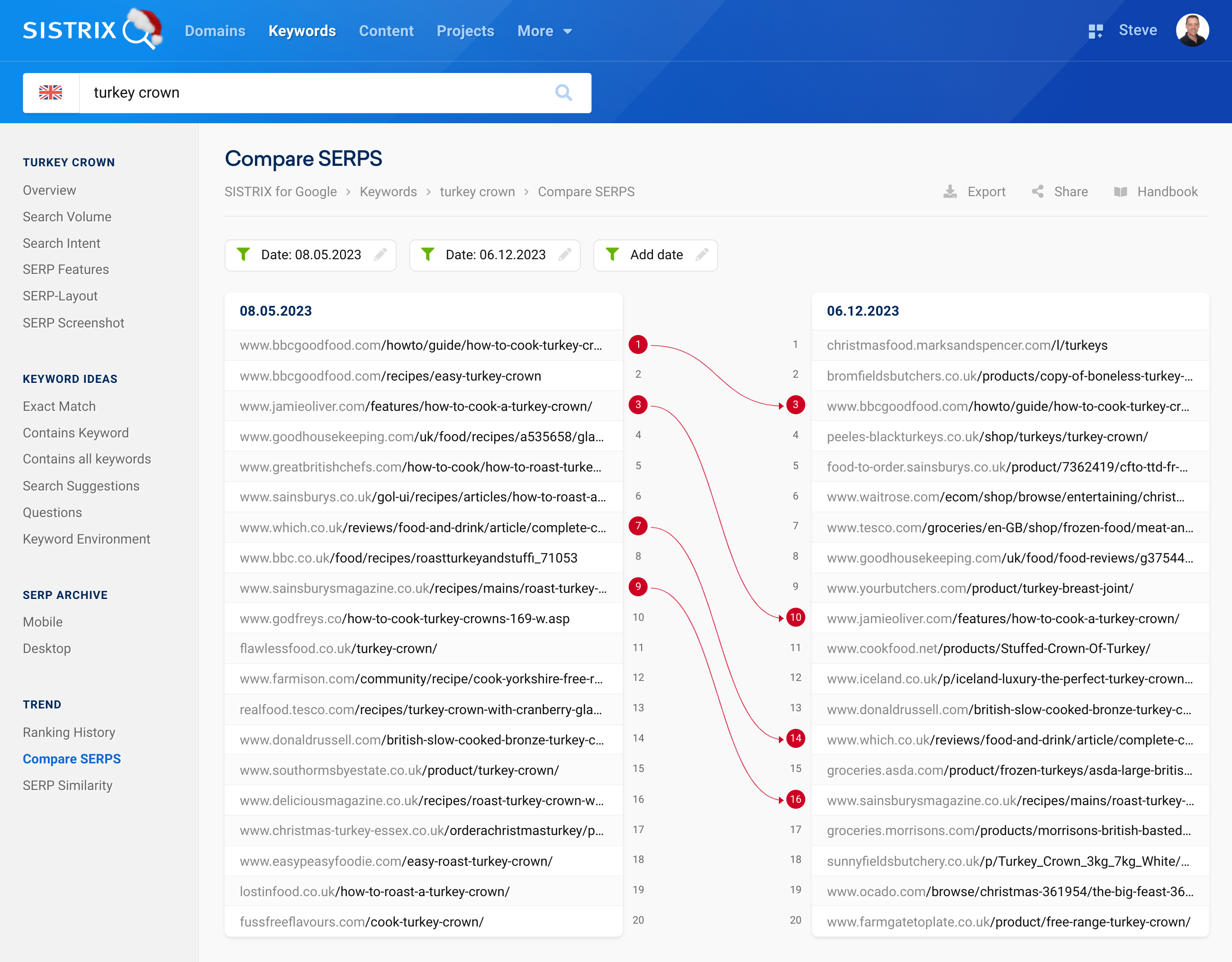
With better graphics, hover-over highlighting and a new three-date option, the feature is even more useful than before.
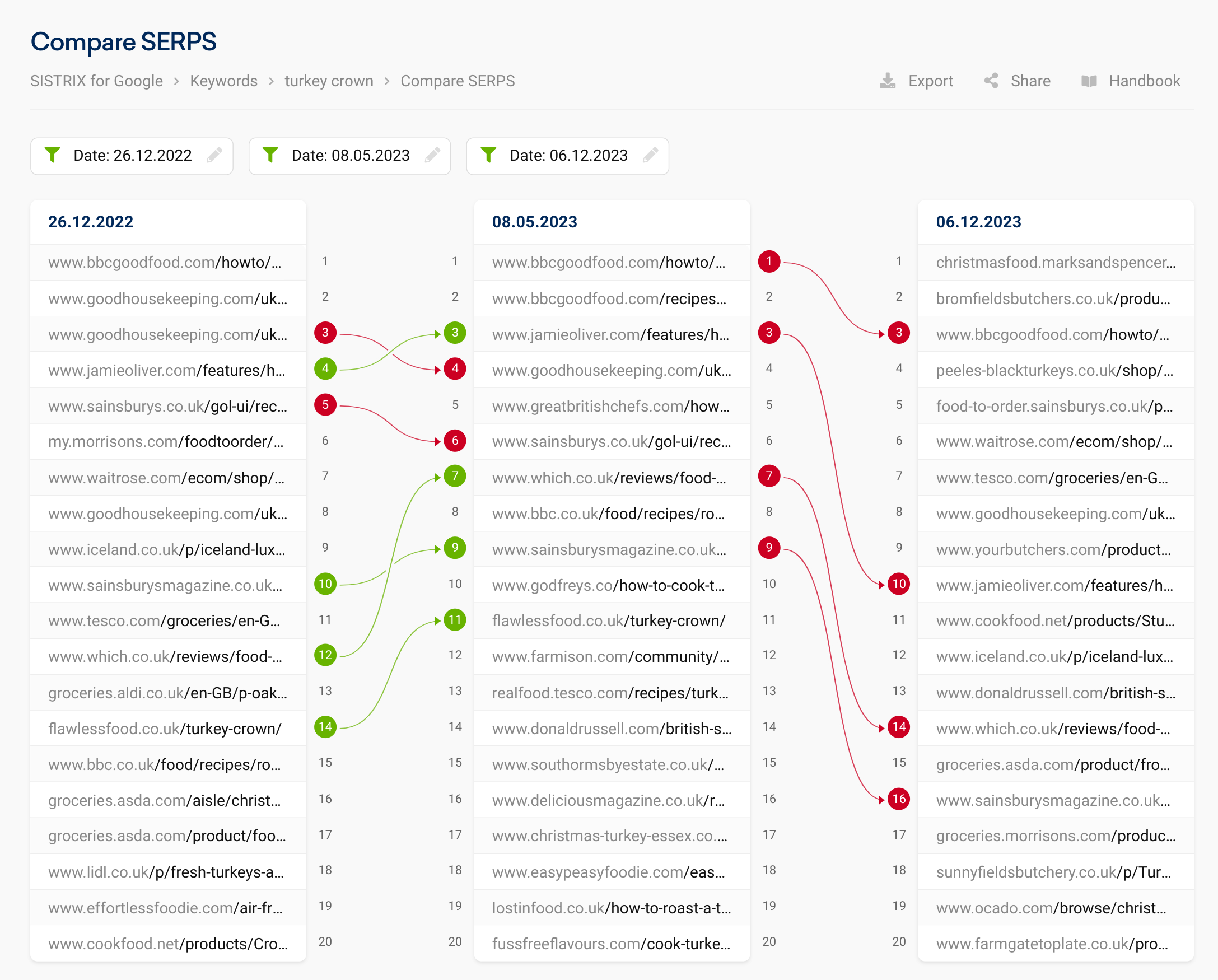
Domain comparison report
Launched in late 2022, but worth mentioning again here – the domain comparison report is a graphical, concise and shareable overview of up to seven domains’ performance across a number of important metrics.
For agencies going into pitches or in-house teams preparing for an SEO budget proposal, domain comparison reports get straight to the important data.

Amazon data updates
Our Amazon data and tools have also seen a lot of changes this year. With over 50% of product searches starting there, brand managers need a range of data and metrics.
This year we improved our product sales figures, allowing product managers to see important Amazon sales and revenue numbers.
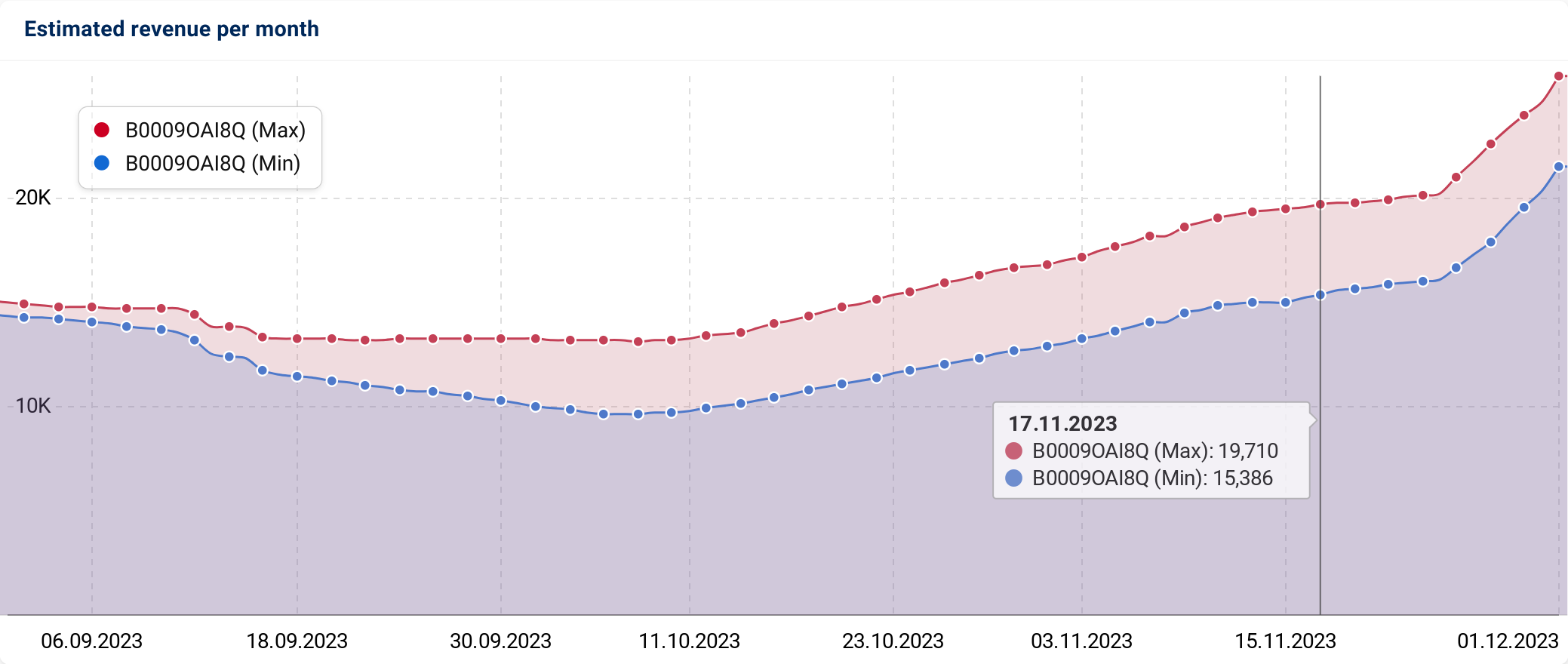
We’ve also made changes to the user experience to bring it in-line with the SISTRIX Google experience.
The summary view of a product gives estimated sales numbers, ratings information, on-page optimisation information and, of course, the Visibility Index history.

Find out more about SISTRIX for Amazon.
Speed-ups, UI improvements and more
Once again we executed projects that help you to get to the information you need more efficiently. Those changes include server, code and UX improvements that help across all parts of the tool, and those projects will continue in 2024.
New data journalist reports
Along with over 30 new data-led reports for each of five languages, 300 new publications in total and over 350 updated articles we’ve grown the data journalism team which has created even more high-quality data-led reports.
We welcome Jono Alderson (EN team), Hervé Le Turdu (EN team), Felix Welckenbach (DE Team) and Nina Roser (DE Team) to the group and we’ll be announcing more members soon.
Our data journalism teams produce TrendWatch, SectorWatch, IndexWatch, Visibility Leaders and the Monthly Newsletter.
Notifications and social platforms
We’re currently active and providing notifications of all new features and content on Twitter and Facebook. Video interviews and updates are sent out on our YouTube channel.
Follow all the changelogs here. Our 2022 summary is available here.
Like you, we’re wondering where the social network paths will lead us in 2024. If you’re looking for us on BlueSky, Threads, in the Fediverse on Mastodon, on Reddit or on any other platform, let us know in the comments below. We’d love to hear from you.
In the meantime, we wish you a successful 2024. Stay visible!
